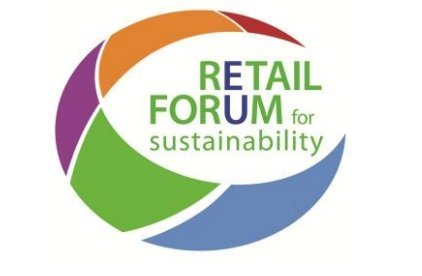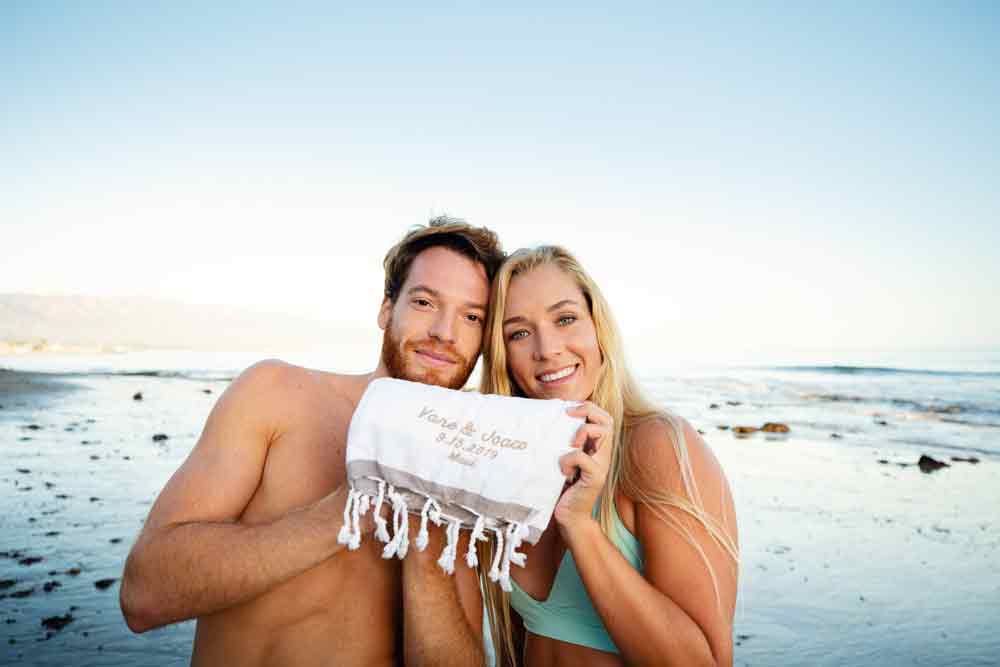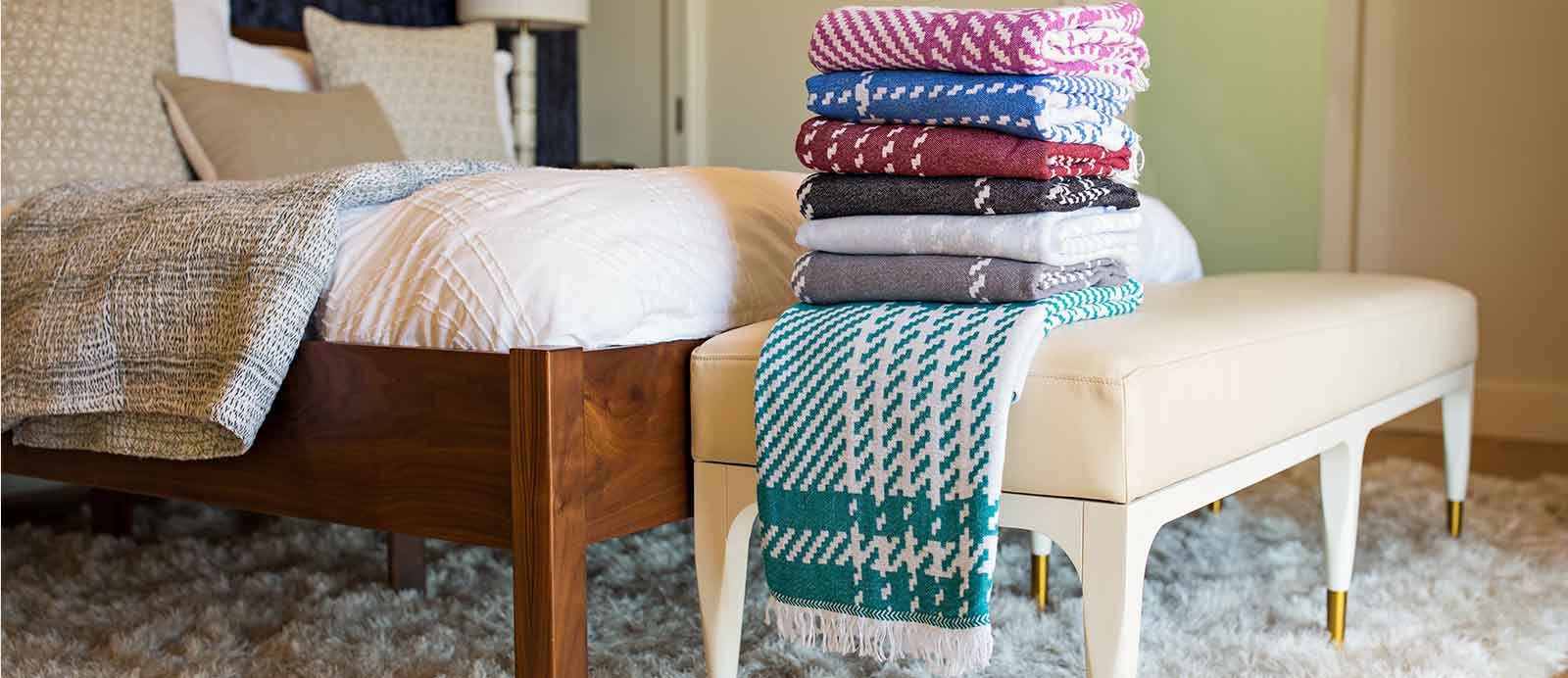Ok, here it is in a nut shell.
Producing Textiles is one of mankind's oldest and largest endeavors.
Unfortunately some practices are not sustainable and hurt the earth.
We believe we can be part of the solution, by sharing some simple but key ways to help lessen our impact on the planet.
1. Dry your towels on a line in the sun. Not only will they smell like a ray of sunshine they'll save you money from expensive gas/electric dryers.
2. Support companies that have an Oeko-Tex certification for sustainable textile production methods. (Like Us :)
3. You don't need to wash your towel after every use. Really your not that dirty, because you just took a shower :) So reuse, reduce and recycle when you can.
Here's the RF Paper that supports larger industry initiatives that we require our suppliers support when manufacturing our towels.
ISSUE PAPER N° 11
The textile industry is the world’s oldest branch of consumer goods manufacturing.
It is a diverse and heterogeneous sector which covers the entire production chain of transforming natural and chemical fibres (such as cotton, wool, and oil) into end-user goods, including garments, household goods, and industrial textiles. In terms of intensity of trade, textile and clothing is the world’s second-biggest economic activity ($353 billion in 2001)1 and account for 7% of world exports2 .
While a hundred years ago the majority of textile production was concentrated in Europe and North America, today, the bulk of textiles and clothing is manufactured in Asia, particularly in China and India. Despite this shift, the textile sector remains an important part of the European manufacturing industry.
According to the latest structural data available, in 2006 there were 220,000 companies employing 2.5 million people and with a turnover of €190 billion. The textile and clothing sector accounts for 3% of total manufacturing value added in Europe3 .
Textiles are heavily intertwined with environmental, social and governance issues. In the past, efforts of producers and retailers have primarily focused on improving the social aspects of textiles e.g. establishing fair working conditions, setting social standards, establishing minumum wages, ensuring occupational safety, imposing a ban on child and forced labour, etc. Over the years, however, there has been growing concern about the environmental impacts of textiles. According to the EIPRO study4 , clothing alone is responsible for 2 to 10 % of the EU’s lifecycle environmental impacts.
This results in textiles coming fourth in the ranking of product category which cause the greatest environmental impact, just after food & drinks, transport and housing. The precise environmental impact of textiles varies significantly depending on the type of fibre the garment is made from. However, generally speaking they include5 : energy use, greenhouse gas (GHG) emissions, nutrients releases (leading to eutrophication) and ecotoxicity from washing (water heating and detergents) and dying of textiles; energy use, resource depletion and GHG emissions from processing fossil fuels into synthetic fibres, e.g. polyester or nylon; significant water use, toxicity from fertiliser, pesticide and herbicide use, energy use and GHG emissions associated with fertiliser generation and irrigation systems related to production of fibre crops, e.g. cotton;
http://www.unep.fr/shared/publications/other/WEBx0008xPA/textiles.pdf 2 http://www.forumforthefuture.org/sites/default/files/images/Forum/Projects/FashionFutures/FashionFutures_2025_FINAL_SML.pdf 3 http://ec.europa.eu/enterprise/sectors/textiles/index_en.htm 4 http://ec.europa.eu/environment/ipp/pdf/eipro_report.pdf 5
More information regarding the environmental impacts over textiles’ life-cycle and their relative significance can be found in the background and technical report developed for the revision of the EU Ecolabel criteria for textiles available at http://susproc.jrc.ec.europa.eu/textiles/stakeholders.html ISSUE PAPER N° 11
[August 2013] 2 water use6 , toxicity, hazardous waste and effluent associated with the production stage, including pre-treatment chemicals, dyes and finishes.
All actors along the supply chain have a role to play in reducing the environmental footprint of textile products. First of all producers, because as explained above, considerable impacts might be generated during the fibre production, dying, printing and finishing; but also consumers as considerable environmental impacts occur during the use phase. For example, most of the energy used in the life-cycle of a cotton T-shirt is related to post-purchasing washing and drying at high temperatures.
It is also estimated that consumers, in the UK throw away as much as 1 million tonnes of textiles every year7 . Against this background, many voluntary initiatives to reduce the environmental footprint of textiles, especially for cotton and polyester, have been developed or are in the pipeline8 .
The uptake by retailers of the various initiatives in this domaine are high. The “march” towards more sustainable textiles is well underway. SCOPE Either as a raw material, as a semi-finished product or as an end product, textiles are assimilated into, or constitute in their own right, a vast range of products used in different domains and for different purposes.
This issue paper will look at the most common textiles sold by retail companies: namely clothing & accessories and interior & decoration textiles such as floor coverings, upholstery, curtains, mattresses, household textiles, etc. This paper will primarily focus on the environmental aspects of textiles.
However, unlike previous papers, the social impacts will also be addressed, where relevant. Although the definition of “sustainable textiles” is still open to debate, and considering the relatively high impact that textiles have on the environment during their life-cycle, in the framework of this paper, “environmentally friendlier” textiles will be defined as textiles which minimise negative life-cycle environmental impacts along the supply chain, including production and consumer behaviour (care and disposal of clothing).
THE LEGAL FRAMEWORK Most textiles specific EU legislation addresses the issues of imports from low-wage countries, sets standards for textile names or sets standards for the chemical analysis of textile fibres. From an environmental perspective, the most relevant pieces of legislation are chemical related: the most important being REACH (Registration, Evaluation, Authorisation and Restriction of Chemical 6 20% of industrial fresh water pollution comes from textiles treatment and dying.
In 2009, the world used three trillion gallons of fresh water to produce 60 billion kilogrammes of fabric. It takes 700 gallons of fresh water to make on cotton T-Shirt – 2010 Global Market Report on Sustainable Textiles 7
http://www.forumforthefuture.org/sites/default/files/images/Forum/Projects/FashionFutures/FashionFutures_2025_FINAL_SML.pdf 8 An important initiative in this sector is currently led by the Sustainable Apparel Coalition (SAC). More information available at www.apparelcoalition.org/ ISSUE PAPER N° 11 [August 2013] 3 substances) (Regulation (EC) No 1907/20069 ).
For textiles produced in Europe, substances incorporated in the textiles, need to be registered. For imported (outside of the EU) textiles, importers need to notify ECHA if the textiles they import contain SVHC (substances of very high concern) in concentration above 0,1% (w/w) if the total annual volume in all products imported is greater than 1 tonne.
Consumers also have the possibility to ask retailers if products contain SVHC in a concentration above 0,1%. Other pieces of legislation include the recently adopted Biocides Regulation (Regulation (EU) No 528/2012)10, which establishes the regulatory framework for the making available on the market and use of biocidal products. Unlike REACH and the Biocides Regulation, the Waste Framework Directive (Directive 2008/98/EC)11 specifically refers to textiles.
Besides defining the waste hierarchy i.e. prevention, preparation for reuse, recycling, energy recovery and disposal, the directive also calls for end of waste specific criteria for textiles to be developed. For textiles, a number of different voluntary environmental labelling schemes exist on the market.
They include the ISO 14024 “Type I” EU Eco-label12, the Nordic Swan and the Blue Angel13 . Other standards address environmental and social criteria along the supply chain e.g. Global Organic Textile Standard (GOTS). Under the EU Eco-label, criteria have been developed for textiles (Commission Decision 2009/567/EC14, currently under revision), textile floor coverings (Commission Decision 2009/967/EC)15, footwear (Commission Decision 2009/563/EC)16 and criteria for bed mattresses (Commission Decision 2009/598/EC)17 .
Other public and private initaitives establishing environmental and social standards have also been set up and taken up both by producers and retailers. 18
A business-led initiative of relevance is currently being developed by the Sustainable Apparel Coalition (SAC). One of the objectives of this initiative is the development of the Higg Index, an 9 http://eur-lex.europa.eu/LexUriServ/LexUriServ.do?uri=OJ:L:2006:396:0001:0849:EN:PDF 10 http://eur-lex.europa.eu/JOYear.do?year=2012&serie=L&textfield2=167&Submit=Search&_submit=Search&ihmlang=en 11 http://eur-lex.europa.eu/LexUriServ/LexUriServ.do?uri=CELEX:32008L0098:EN:NOT 12 http://ec.europa.eu/environment/ecolabel/ 13 ISO 14024 “Type I” ecolabels have the advantage of being voluntary, multiple-criteria based, third party verified, based on life cycle considerations and multi-stakeholders participation.
See Retail Forum issue paper on Labelling: http://ec.europa.eu/environment/industry/retail/pdf/labelling_issue%20paper_final.pdf 14 http://eur-lex.europa.eu/LexUriServ/LexUriServ.do?uri=OJ:L:2009:197:0070:0086:EN:PDF 15 http://eur-lex.europa.eu/LexUriServ/lexUriServ.do?uri=OJ:L2009:332:0001:0016:EN:PDF 16 http://eur-lex.europa.eu/LexUriServ/LexUriServ.do?uri=OJ:L:2009:196:0027:0035:EN:PDF 17 http://eur-lex.europa.eu/LexUriServ/LexUriServ.do?uri=OJ:L:2009:203:0065:0080:EN:PDF 18
In France, under the framework of Grenelle II law, there has been a pilot experience aimed at developing multi-criteria LCA based indicator to be used for communicating the environmental performance of textile to consumers.
The results of the testing have proven the feasibility of such an approach and have been welcomed by both industries and consumers. Retour d’expériences sur la filière textile/chaussure en Alsace, Bourgogne et Lorraine, available at
http://www.afnor.org/atlas/europe/france/alsace-lorraine-bourgogne ISSUE PAPER N° 11 [August 2013]
4 indicator based tool for apparel that enables companies to evaluate material types, products, facilities and processes based on a range of environmental and product design choices19 To check compliance with fair working conditions in line with the ILO norms a broad range of social standard schemes were developed by retailers and producers. The most common are summarised under the umbrella of the Global Social Compliance Programme20 .
OPPORTUNITIES AND BARRIERS Currently, it is the producers and retailers who are mostly driving the improvements in sustainability of textiles and are also working at raising consumer awareness. There is growing attention towards not only social, but also environmental impacts of textiles; especially for specific kind of products such as children's wear, demand for more environmentally friendlier textiles is continuously increasing.
Permanent and quick changes in fashion can be an opportunity for rapid uptake of sustainable garments, but also a barrier since such trends could quickly be replaced by something else. In other areas like interior or underwear innovation cycles are much slower. Opportunities By improving their environmental and social performances, brands can improve their reputation; Linking business to social and environmental projects enables companies to build a strong connection with consumers by involving them in sustainability initiatives; Technological innovation in production processes, along the supply chain which contribute to improve the environmental footprint of processes and which may save costs, enabling the use of more recycled materials i.e. end of life polyester can be recycled into new clothes;
There are already well established environmental labels that producers can apply for to prove their superior environmental performances (such as the EU Ecolabel, Blue Angel, Nordic Swan, GOTS).
Barriers Complex and global value chains often with low traceability represent an obstacle for producers and brands who want to improve their production patterns; Socially and environmentally friendlier textiles might result in more expensive finished products; The perception of some consumers that sustainable garments are not stylish or fashionable, and that the design and the appearance of eco-clothing is unfashionable and unattractive21; 19 www.apparelcoalition.org 20 www.gscpnet.com 21 http://www.bsr.org/reports/BSR_NICE_Consumer_Discussion_Paper.pdf ISSUE PAPER N° 11 [August 2013] 5 An insufficient consumer demand. Producers and retailers who want to promote more environmentally friendlier textiles need to develop the market;
The market for recycled garments and fibres is still weak due to insufficient take-back systems and absence of convenient and reputable drop-off locations for unwanted clothing/textiles in many countries, which results in perfectly useable garments sent to landfill or incinerated; Low knowledge level about strategic sustainability among fashion and textile companies and their suppliers and lack of resources to upgrade and integrate new knowledge and new technologies, especially in small and medium sized enterprises;
There are many labels on the market which can lead to consumer confusion. CONCLUSIONS Developing production processes using lower amounts of water, pesticides, insecticides, hazardous chemicals or lower releases of GHG etc. is as important as the measures adopted by retailers and consumers to select such textiles.
However, consumer behavior in how they care for and dispose of clothing and other textile products is of equal importance, e.g. selecting the appropriate washing temperatures, taking the right steps to significantly extend the lifetimes and encouraging recycling of garments once they have reached their end of life. These important issues are all areas where retailers can have a high degree of influence22 . Key challenges Continuing to improve the working and social conditions of workers outside the EU, while offering textiles at an affordable price for EU consumers whose purchasing power is declining; Improving the overall environmental footprint of textiles over their entire life-cycle and supply chain; Changing consumer attitudes of buying as cheap as possible and as many as possible;
Providing consumers with relevant information concerning the environmental footprint of the textile products, based on harmonized systems at least at European level. What can retailers do? Offer and promote more environmentally friendlier textiles; Demand more environmental and social accountability from producers; 22 See for example the NICE Consumer Report available at: http://www.nordicfashionassociation.com/41193/The%20NICE%20Consumer%20report ISSUE PAPER N° 11 [August 2013] 6 Communicate to consumers the added value of sustainability and inform them on more environmentally friendly behaviour e.g. encouraging the most efficient wash cycle programmes, lower temperatures etc. and how this can help them save money on energy bills and reduce water usage thus lowering overall environmental footprint; Encourage recycling of garments, promoting locally provided clothes banks/bins, etc.; For retailers who provide employees with working clothes, revert to more socially and environmentally friendlier textiles; Include sustainability issue in staff training.
What can producers do?
Source their suppliers based on their social and environmental performances;
Use best practices in technological innovation which contribute to improve the environmental footprint of processes;
Substitute hazardous substances with safer substances;
Increase information exchange with retailers, provide them with information about the latest innovative solutions that help them address their sustainability challenges/objectives;
Support the development of Product Category Rules23 for textiles according to a methodology at least harmonised at European level and use it as a basis for communicating the environmental performance of their products both in B2B and B2C;
Develop and offer more environmentally friendlier textiles24 ;
Promote the use of more sustainable fibres like organic cotton, recycled fibres, etc.;
Engage in research about new fibres and materials with lower environmental impacts compared to natural fibres;
Improve care labels on products, and together with retailers increase focus on consumer communication to promote responsible care;
Encourage the reuse/recycling of old clothes and textiles to produce new clothes, rather than using raw materials, promote remanufacturing and fashion upgrades;
Communicate to consumers their sustainability efforts;
Demand their suppliers to implement international social standards e.g. ILO standards. What can policy makers do? 23 As set out in the Communication from the Commission "Building the Single Market for Green Products - Facilitating better information on the environmental performance of products and organisations", COM/2013/0196 final, http://eurlex.europa.eu/LexUriServ/LexUriServ.do?uri=COM:2013:0196:FIN:EN:PDF 24 See Retail Forum issue paper on Labelling: http://ec.europa.eu/environment/industry/retail/pdf/labelling_issue%20paper_final.pdf ISSUE PAPER N° 11 [August 2013] 7 Encourage initiatives, project innovation etc. and provide incentives for the development and take-up of environmentally friendlier textiles;
Lead by example by purchasing environmentally friendlier textiles following the GPP criteria developed at European level25
Support the inclusion of social criteria in the existing EU Ecolabel and take an active role in its on-going revision and GPP criteria developed at European level26;
Encourage the implementation of ILO norms;
Support, implement and/or fund consumer awareness and behaviour change campaigns;
Support industry and Member States in the development of Product Category Rules on textiles based on a harmonised methodology;
Examine the use of economic instruments for promoting sustainable consumption of textiles/clothing;
Develop measures for better tackling “greenwashing” i.e. false sustainability claims;
Governments should revisit the approach and effectiveness of policy related to chemical use in the fashion and textile industry, including chemicals used in the fibre or garment production processes, no matter if they take place in the European Union or not. In addition, new technologies, such as nanotechnology and GMOs, should be thoroughly investigated to determine whether and to what extent they pose a risk to human health and the environment. What can we do together?
Launch and further promote collaborative initiatives to improve the environmental performance of textiles across the supply chain (sustainable design, fibres and fabrics, maximise reuse/recycling/end-of-life-management, sustainable cleaning);
Start awareness raising campaigns and sharing of experiences in textile processing regions;
Manufacturers (clothing, white goods, detergents, etc.), retailers, consumer groups, etc. should carry out campaigns and inform consumers on issues of common interest related to sustainable fashion consumption and work with designers, celebrities and NGOs to help spread the messages on how to be more environmentally friendly, e.g. reducing the temperatures of the wash cycle, etc. 25 http://ec.europa.eu/environment/gpp/pdf/toolkit/textiles_GPP_product_sheet.pdf 26 Information is available at: http://susproc.jrc.ec.europa.eu/textiles/






